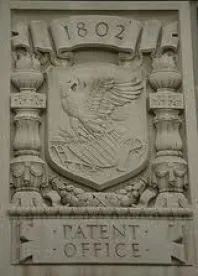Savvy advertisers know that some uses of a competitor’s trademark—“nominative” uses—generally are not considered infringement. An important but vague aspect of the doctrine of “nominative fair use” was recently illuminated by the First Circuit Court of Appeals in Swarovski AG v. Building #19, Inc.1 Specifically, the court held that unnecessary use of a mark does not by itself create a likelihood of confusion. The ruling is instructive to anyone who uses another’s trademark, or whose trademark is used by another, in advertising.
The nominative fair use doctrine applies when one uses the trademark of another to refer to the markholder’s products or services. For example, an independent auto repair shop that specializes in Volkswagens can use the registered trademark “Volkswagen” in its advertising without committing trademark infringement. Comparative advertising is a another example: It is well-established that you have a limited right to use another’s mark when truthfully comparing your product to the markholder’s product.
Although it is generally acknowledged that a proper nominative use is not an infringement, there is no national consensus on how the doctrine relates to the traditional “likelihood of confusion” test or what exactly is a proper nominative use. The Ninth Circuit Court of Appeals, for example, treats the doctrine as an alternative test for evaluating likelihood of confusion, whereas the Third Circuit Court of Appeals treats it as a defense to a finding of likelihood of confusion.2 Other circuits acknowledge the doctrine but have not officially endorsed any particular test.
One commonly recognized hallmark of a proper nominative use is “no unnecessary use.” Even if use of the mark is necessary to identify the markholder’s products or services, the use would still not be considered a “nominative fair use” if the alleged infringer “used more of the mark than necessary” to identify the markholder’s goods and services.3 Several cases recognize that the “no unnecessary use” condition prevents an unauthorized user of the mark from using the distinctive lettering style or other design elements of the mark. Our independent VW repair shop, for example, can use “Volkswagen” or “VW” in its signage, but it cannot use VW’s distinctive lettering style or color or the familiar encircled VW emblem. Beyond that, however, the “no unnecessary use” condition is poorly defined in the case law. This is the topic addressed by the First Circuit in Swarovski AG.
Building # 19, the defendant in Swarovski AG, prepared a newspaper advertisement to promote a Mother’s Day sale of Swarovski crystal figurines it had purchased from an insurer’s salvage sale. The newspaper ad included a headline, in which the registered trademark “Swarovski” appeared in extra-large, capitalized, bold and distinctive font, and a disclaimer, in much smaller, unbolded font, of any affiliation with Swarovski.
Swarovski moved for a preliminary injunction to prevent Building # 19 from using the Swarovski trademark in the advertisement. The district court did not find that Swarovski would succeed under a traditional “likelihood of confusion” analysis. Evaluating whether the ad was a proper nominative use of the mark, the district court found that the font size of the word “Swarovski” in the headline was more than was necessary to describe the product. The court allowed the ad, subject to the preliminary injunction that that the font size of the word “Swarovski” in the headline be limited to the same size as the font in the disclaimer.
The appellate court reversed the preliminary injunction because the district court did not make a finding that Building # 19’s use of the larger font in the headline created a likelihood of confusion. A viable suit for trademark infringement requires proof of a likelihood of confusion, the appellate court reasoned, and a trademark holder has no right to police “unnecessary” use of its mark. Thus, in the “nominative use” analysis, mere “unnecessary” use of a mark is not a substitute for likelihood of confusion and will not support an injunction.
More generally, Swarovski AG teaches that, in evaluating whether use of a competitor’s mark is a proper nominative use, the use must be evaluated in the context of whether it causes a likelihood of confusion. Use of the distinctive font of a mark might suggest that the advertiser is affiliated with the markholder, which would be an improper nominative use. Using a bigger font for the trademark, on the other hand, may not have the same effect and may, or may not, be a proper nominative use. The test is whether the nature of the nominative use causes a likelihood of confusion.
1. Swarovski AG v. Building # 19, Inc., 704 F.3d 44 (1st Cir. 2013).
2. Compare Toyota Motor Sales, USA v. Tabari, 610 F.3d 1171 (9th Cir. 2010) with Century 21Real Estate Corp. v. Lendingtree, Inc., 425 F.3d 211 (3rd Cir. 2005).
3. See Swarovski AG, 704 F.3d. at 50; Toyota Motor Sales, 610 F.3d at 1175-76; Century 21Real Estate Corp., 425 F.3d at 229-30.



 />i
/>i
